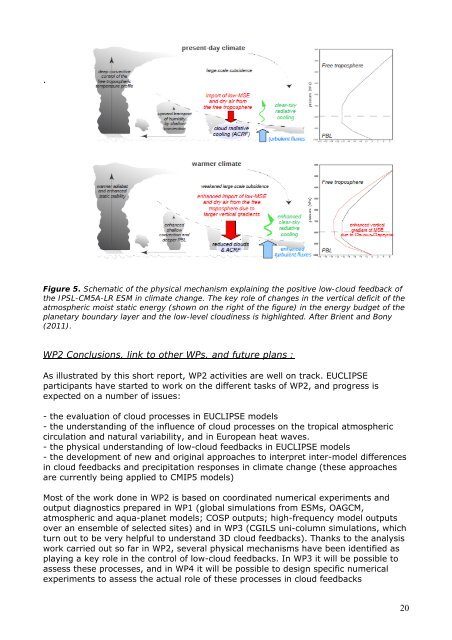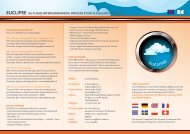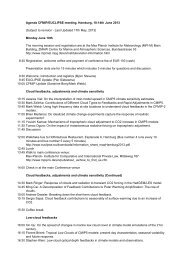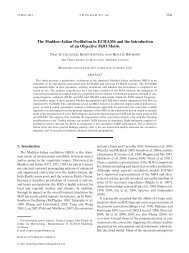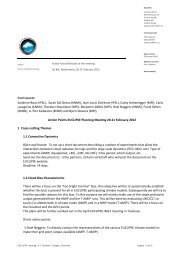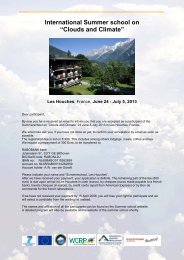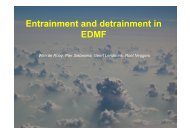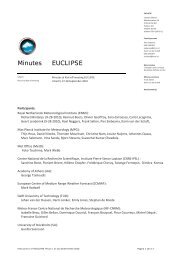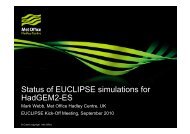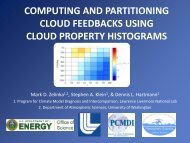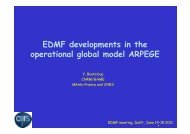EUCLIPSE First Period Report
EUCLIPSE First Period Report
EUCLIPSE First Period Report
You also want an ePaper? Increase the reach of your titles
YUMPU automatically turns print PDFs into web optimized ePapers that Google loves.
.<br />
Figure 5. Schematic of the physical mechanism explaining the positive low-cloud feedback of<br />
the IPSL-CM5A-LR ESM in climate change. The key role of changes in the vertical deficit of the<br />
atmospheric moist static energy (shown on the right of the figure) in the energy budget of the<br />
planetary boundary layer and the low-level cloudiness is highlighted. After Brient and Bony<br />
(2011).<br />
WP2 Conclusions, link to other WPs, and future plans :<br />
As illustrated by this short report, WP2 activities are well on track. <strong>EUCLIPSE</strong><br />
participants have started to work on the different tasks of WP2, and progress is<br />
expected on a number of issues:<br />
- the evaluation of cloud processes in <strong>EUCLIPSE</strong> models<br />
- the understanding of the influence of cloud processes on the tropical atmospheric<br />
circulation and natural variability, and in European heat waves.<br />
- the physical understanding of low-cloud feedbacks in <strong>EUCLIPSE</strong> models<br />
- the development of new and original approaches to interpret inter-model differences<br />
in cloud feedbacks and precipitation responses in climate change (these approaches<br />
are currently being applied to CMIP5 models)<br />
Most of the work done in WP2 is based on coordinated numerical experiments and<br />
output diagnostics prepared in WP1 (global simulations from ESMs, OAGCM,<br />
atmospheric and aqua-planet models; COSP outputs; high-frequency model outputs<br />
over an ensemble of selected sites) and in WP3 (CGILS uni-column simulations, which<br />
turn out to be very helpful to understand 3D cloud feedbacks). Thanks to the analysis<br />
work carried out so far in WP2, several physical mechanisms have been identified as<br />
playing a key role in the control of low-cloud feedbacks. In WP3 it will be possible to<br />
assess these processes, and in WP4 it will be possible to design specific numerical<br />
experiments to assess the actual role of these processes in cloud feedbacks<br />
20


